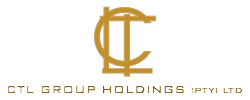AI in the workplace

Artificial Intelligence (AI) transforms workplaces in ways we couldn’t have imagined a decade ago.
From streamlining repetitive tasks to assisting with complex problem-solving, employees use AI tools like ChatGPT, DALL-E, and other generative AI software to enhance productivity and creativity. While this is great news for innovation, it raises important questions about control, security, and compliance for companies.
What is shadow AI
Let’s talk about shadow AI. This refers to employees using AI tools without the company’s knowledge or approval. Think of it like shadow IT, unauthorised apps or systems employees use to get work done faster. While these tools might seem harmless, shadow AI brings some significant risks:
- Data security risks. Employees can input sensitive company data into external AI tools. If the tool stores or processes this data improperly, it could lead to breaches, violating privacy laws or exposing intellectual property.
- Compliance issues. Many companies operate under strict regulatory environments. Shadow AI usage might lead to non-compliance with laws like GDPR, POPIA, or the EU AI Act.
- Unintended outputs. AI tools aren’t always perfect. Shadow AI can lead to incorrect or biased outputs, which might harm a company’s reputation if relied upon for decision-making.
Why employees turn to AI
The reality is that employees use AI because it helps them work smarter. AI saves time, reduces burnout, and improves efficiency, especially for tasks like generating reports, automating emails, or analysing data. If companies don’t provide clear guidance on AI use, employees will turn to these tools on their own.
Steps to address AI in your workplace
Here’s what you can do to keep your company protected while empowering employees to use AI responsibly:
- Establish an AI Policy. Create a clear AI usage policy. Outline which tools are approved, the data employees can share, and any restrictions based on legal or ethical considerations.
- Educate your workforce. Employees often don’t realise the risks of shadow AI. Regular data protection, security, and compliance training sessions will go a long way.
- Adopt approved AI tools. Work with your IT team to select and approve AI tools that align with your company’s goals and compliance requirements. By offering alternatives, you reduce the temptation for shadow AI.
- Monitor and audit. Implement systems to track AI usage in your organisation. This isn’t about micromanaging, it’s about ensuring security and compliance while identifying tools employees genuinely find helpful.
Why this matters
AI in the workplace isn’t a trend, it’s the future. By addressing shadow AI and creating a framework for responsible AI use, you can help your employees innovate without exposing your company to unnecessary risks.
Remember, the goal isn’t to restrict AI but to empower employees to use it safely and effectively. Taking proactive steps now will build a workplace ready for the AI-driven future.
By Wandile Mpisi
